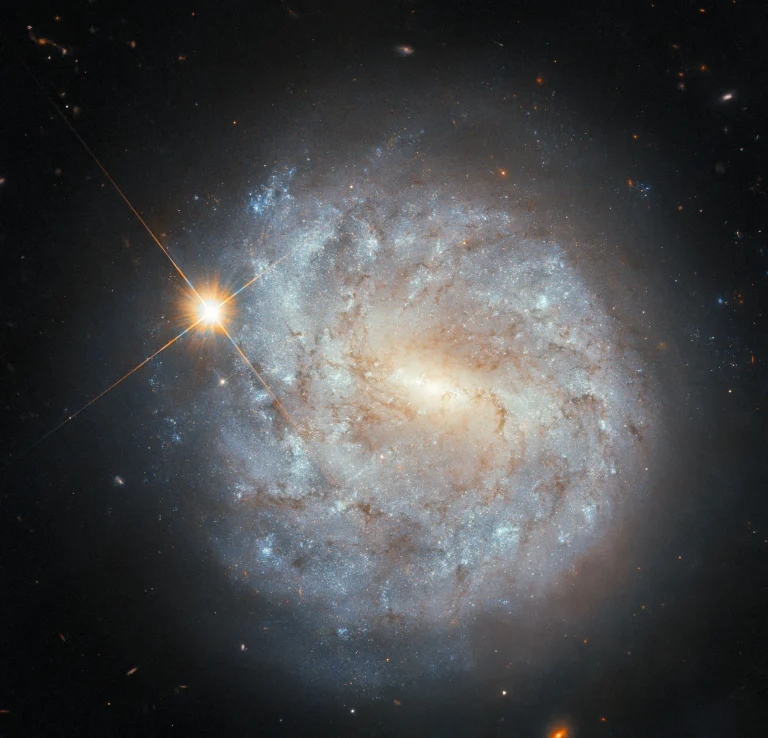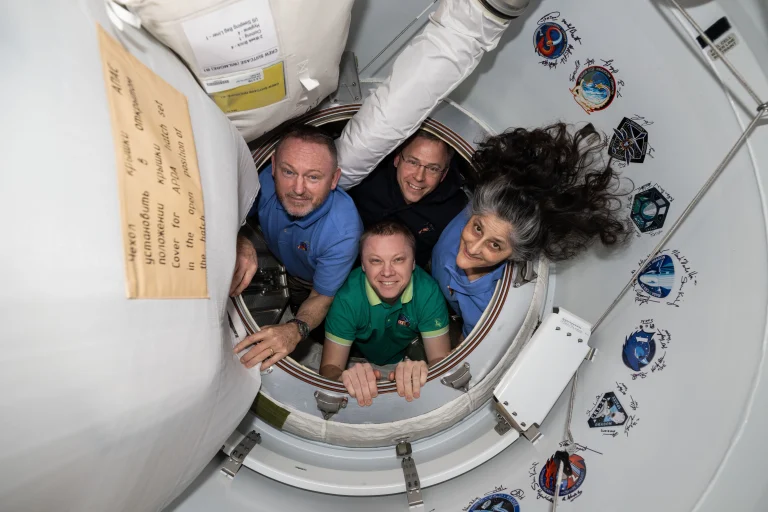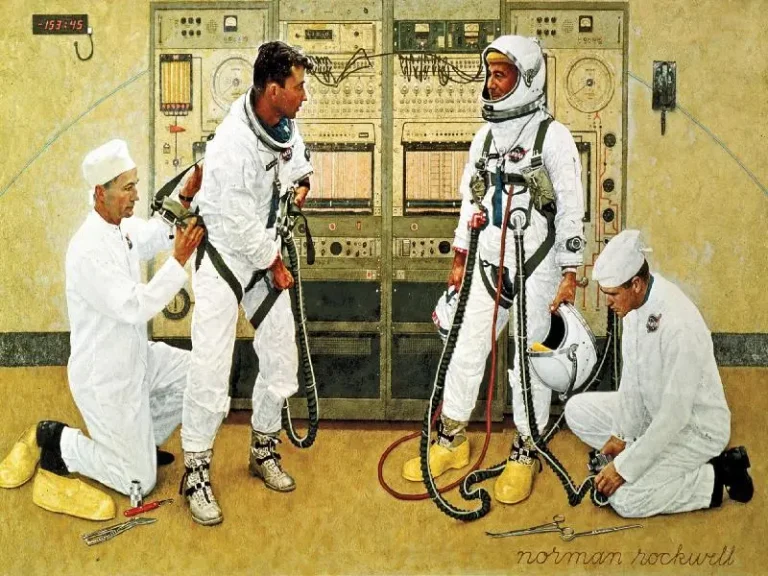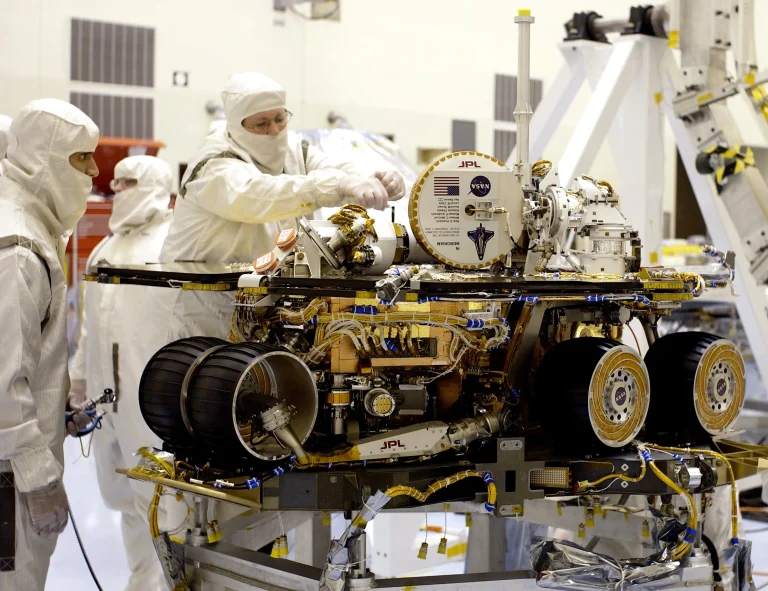The Cassini-Huygens spacecraft captured this last “eyeful” of Saturn and its rings on March 27, 2004, as it continued its way to orbit insertion. This natural color image shows the color variations between atmospheric bands and features in the southern hemisphere of Saturn, subtle color differences across the planet’s middle B ring, as well as a bright blue sliver of light in the northern hemisphere – sunlight passing through the Cassini Division in Saturn’s rings and being scattered by the cloud-free upper atmosphere.
Cassini-Huygens, at 12,593 pounds one of the heaviest planetary probes ever, was launched on Oct. 15, 1997, on a Titan IVB/Centaur rocket from Cape Canaveral Air Force Station in Florida. Although that was the most powerful expendable launch vehicle available, it wasn’t powerful enough to send the massive Cassini-Huygens on a direct path to Saturn. Instead, the spacecraft relied on several gravity assist maneuvers to achieve the required velocity to reach the ringed planet. This seven-year journey took it past Venus twice, the Earth once, and Jupiter once, gaining more velocity with each flyby for the final trip to Saturn.
On July 1, 2004, with the Huygens lander still attached, Cassini fired its main engine for 96 minutes and entered an elliptical orbit around Saturn, becoming the first spacecraft to do so. Thus began an incredible 13-year in-depth exploration of the planet, its rings and its satellites, with scores of remarkable discoveries.
The Cassini mission ended on Saturn in 2015, when operators deliberately plunged the spacecraft into the planet to ensure Saturn’s moons remain pristine for future exploration.
Image Credit: NASA/JPL/Space Science Institute
2004年3月27日,卡西尼-惠更斯号宇宙飞船继续向轨道插入的途中,最后一次捕捉到了土星及其光环的“全景”。这张自然彩色图像显示了土星南半球大气带和特征之间的颜色变化,土星中间B环上细微的颜色差异,以及北半球明亮的蓝色条纹——阳光穿过土星环中的卡西尼裂缝,被无云的上层大气散射。
卡西尼-惠更斯号重达12,593磅,是有史以来最重的行星探测器之一,于1997年10月15日从佛罗里达州卡纳维拉尔角空军基地用泰坦IVB/半人马座火箭发射。尽管这是当时最强大的一次性运载火箭,但仍不足以直接将庞大的卡西尼-惠更斯号送往土星。因此,该航天器依靠几次引力辅助机动来获得到达土星所需的速度。在这7年的旅程中,它两次飞掠金星,一次飞掠地球,一次飞掠木星,每次飞掠速度都有所提高,最终抵达土星。
2004年7月1日,在惠更斯号着陆器仍然连接在一起的情况下,卡西尼号启动了主引擎96分钟,进入了环绕土星的椭圆轨道,成为第一艘这样做的航天器。由此开始了对土星、土星环和土星卫星长达13年的深入探索,并取得了许多重大发现。
卡西尼任务于2015年在土星上结束,当时操作员故意将航天器堕入土星,以确保土星的卫星保持原始状态,供未来探索。
影像来源: NASA/JPL/Space Science Institute







